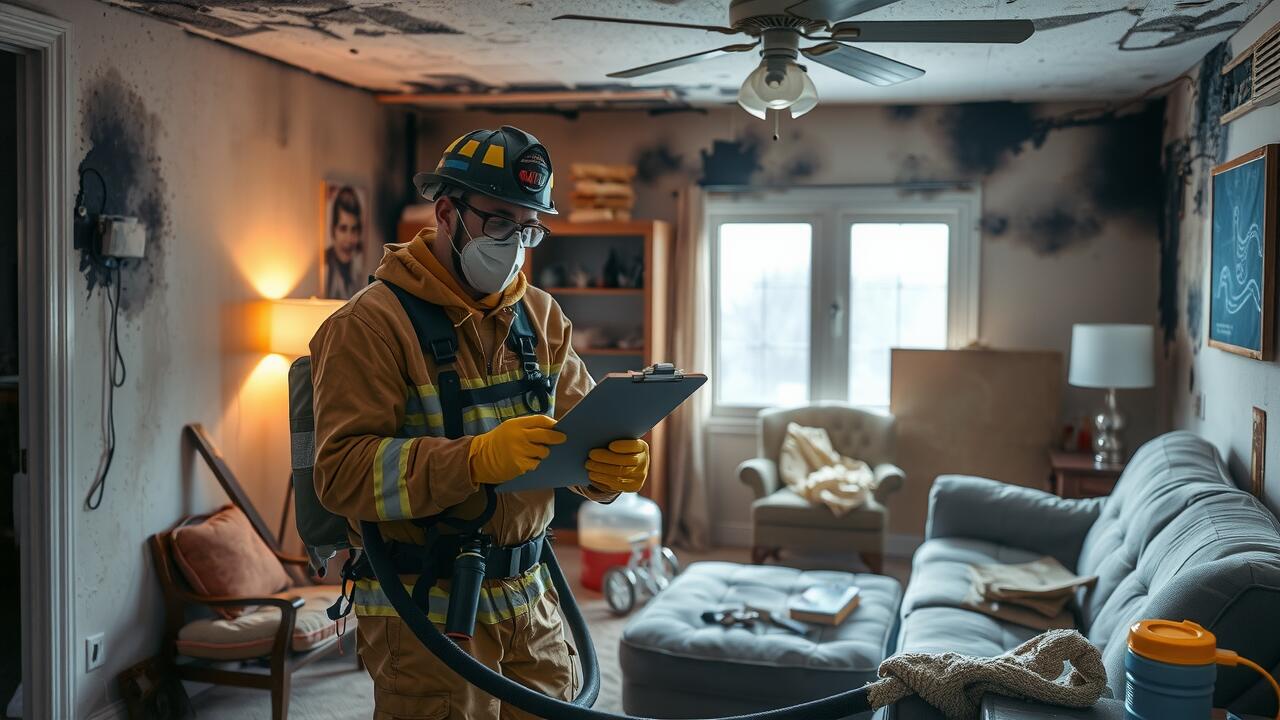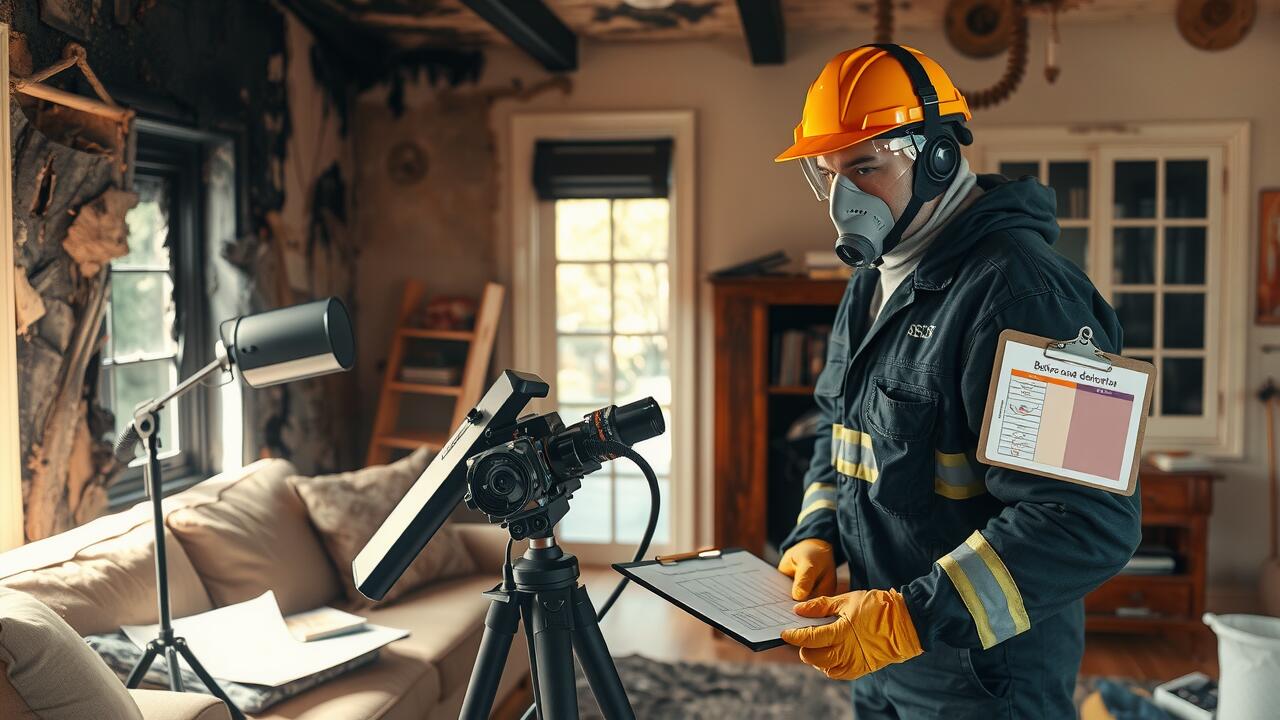
Restoring Walls and Ceilings
Restoring walls and ceilings after a fire is an essential task that requires careful attention to detail. Initially, the damage assessment begins with a thorough inspection for structural integrity. Fire can cause significant harm, including compromised materials and hidden hazards. Homeowners must also consider the potential for smoke residue, which can cling to surfaces and create lingering odors even after the initial damage has been addressed.
When engaging professionals for fire damage restoration, such as those offering Fire & Smoke Damage Restoration in Galloway, Ohio, it’s crucial to discuss the materials and techniques used during restoration. Selecting the right materials for rebuilding walls and ceilings can impact the overall effectiveness of the restoration process. Factors like durability, fire resistance, and aesthetic appeal should guide decision-making to ensure a successful outcome that meets safety and design standards.
Choosing Materials for Rebuilding
Choosing the right materials for rebuilding a fire-damaged house is essential for both aesthetic appeal and structural integrity. Many homeowners prefer materials that are durable and resistant to future damage. Options like treated wood, steel studs, and fire-rated drywall can provide additional protection against potential hazards. Consulting with professionals who specialize in Fire & Smoke Damage Restoration in Galloway, Ohio can guide homeowners in selecting the best materials tailored to their specific needs.
Budget constraints will also play a significant role in material selection. While opting for higher-quality supplies might seem costly upfront, they often result in long-term savings through reduced maintenance and improved resilience. Homeowners should weigh the costs and benefits of various materials carefully. This approach can ensure a successful rebuild that meets both safety standards and personal preferences.
Flooring Restoration Options
When restoring flooring in a fire-damaged house, various options can cater to different needs and budgets. Homeowners might consider replacing damaged materials with hardwood, laminate, or tiles, each providing unique benefits. Hardwood floors offer a classic aesthetic and durability, while laminate can be a cost-effective alternative that mimics the look of wood. Tiles are ideal for areas prone to moisture, adding a practical yet stylish touch.
In Galloway, Ohio, specialized services for fire & smoke damage restoration can help guide homeowners through flooring restoration decisions. Professionals can assess the extent of the damage and recommend the best course of action. Whether it involves complete replacement or refinishing existing floors, understanding the costs associated with each option is essential. This knowledge enables homeowners to make informed choices while ensuring their space is safe and visually appealing.
Evaluating Different Flooring Choices
Choosing the right flooring after fire damage involves considering both aesthetics and practicality. Options such as laminate, vinyl, tile, or carpet each come with distinct advantages and drawbacks. Laminate and vinyl are often preferred for their durability and ease of maintenance, making them suitable for family areas. Tile, while more expensive, offers an attractive finish and is resistant to moisture. On the other hand, carpet can provide warmth and comfort but may require more frequent replacement, especially in areas affected by smoke.
When assessing flooring choices, one should also factor in installation costs and the potential need for additional underlayment or subfloor repairs. In the context of Fire & Smoke Damage Restoration in Galloway, Ohio, consulting with specialists can help determine the best material based on the extent of damage and the intended use of each space. Understanding the local climate and potential for moisture can also influence the final decision on flooring types, ensuring a long-lasting and visually appealing result.
Painting and Finishing Touches
When considering the painting and finishing touches after a fire, it’s essential to choose the right paint and materials to ensure a successful restoration. High-quality paint can help seal in odors and provide a fresh look. Professional services often recommend paint that specifically addresses fire and smoke damage, as it can offer greater durability and coverage. The cost of paint varies based on the brand and finish, so budgeting adequately is crucial.
Labor costs also play a significant role in the overall expenses for painting. Hiring skilled painters familiar with fire-damaged homes ensures a more thorough and professional job. In areas like Galloway, Ohio, where companies offer specialized services, seeking out Fire & Smoke Damage Restoration in Galloway, Ohio can lead to effective solutions and provide clarity on pricing. Cost estimates often include labor, which can fluctuate based on the extent of damage and the complexity of the work involved.
Cost of Quality Paint and Labor
When restoring a fire-damaged house, selecting quality paint is crucial for both aesthetics and durability. High-quality paint not only covers smoke stains effectively but also adheres better to surfaces previously affected by heat. Prices for quality paint can range significantly depending on the brand, type, and finish. On average, homeowners can expect to pay between $25 to $60 per gallon. Additional costs may arise from specialty paints designed to seal and prevent lingering odors.
Labor costs also play a significant role in the overall budget for painting and finishing touches. Professional painters may charge between $20 to $50 per hour, depending on their experience and your location. In cases of extensive fire damage, additional preparation work could increase labor time and costs. Engaging a reputable contractor experienced in Fire & Smoke Damage Restoration in Galloway, Ohio, can ensure a high standard of work while adhering to safety protocols during the restoration process.
FAQS
What is the average cost to rehab a fire-damaged house?
The average cost to rehab a fire-damaged house can range significantly based on the extent of the damage, location, and materials used, but typically falls between $15,000 to $100,000 or more.
How can I get an accurate estimate for my fire-damaged home?
To get an accurate estimate, it’s essential to hire a professional contractor who can assess the extent of the damage and provide a detailed quote based on necessary repairs and materials.
Are there specific materials recommended for rebuilding after fire damage?
Yes, materials that are heat-resistant and non-combustible, such as concrete, brick, and certain types of treated wood, are recommended for rebuilding to enhance safety and longevity.
What factors influence the cost of flooring restoration options?
Factors influencing flooring restoration costs include the type of flooring material chosen, the size of the area being restored, labor costs, and whether existing flooring can be salvaged or must be replaced.
How much should I budget for painting and finishing touches after a fire?
Budgeting for painting and finishing touches typically ranges from $1 to $3 per square foot for paint and labor, depending on the quality of materials and the scope of work needed.
